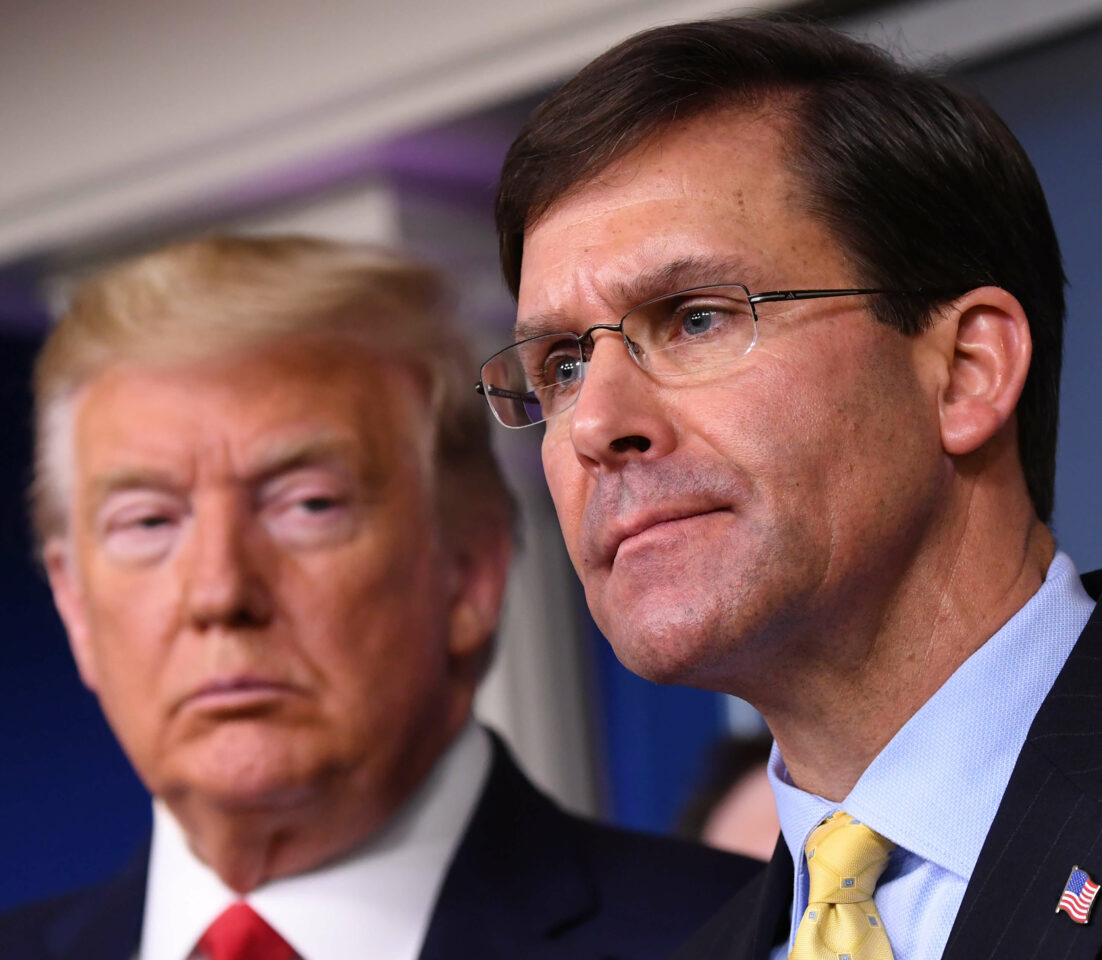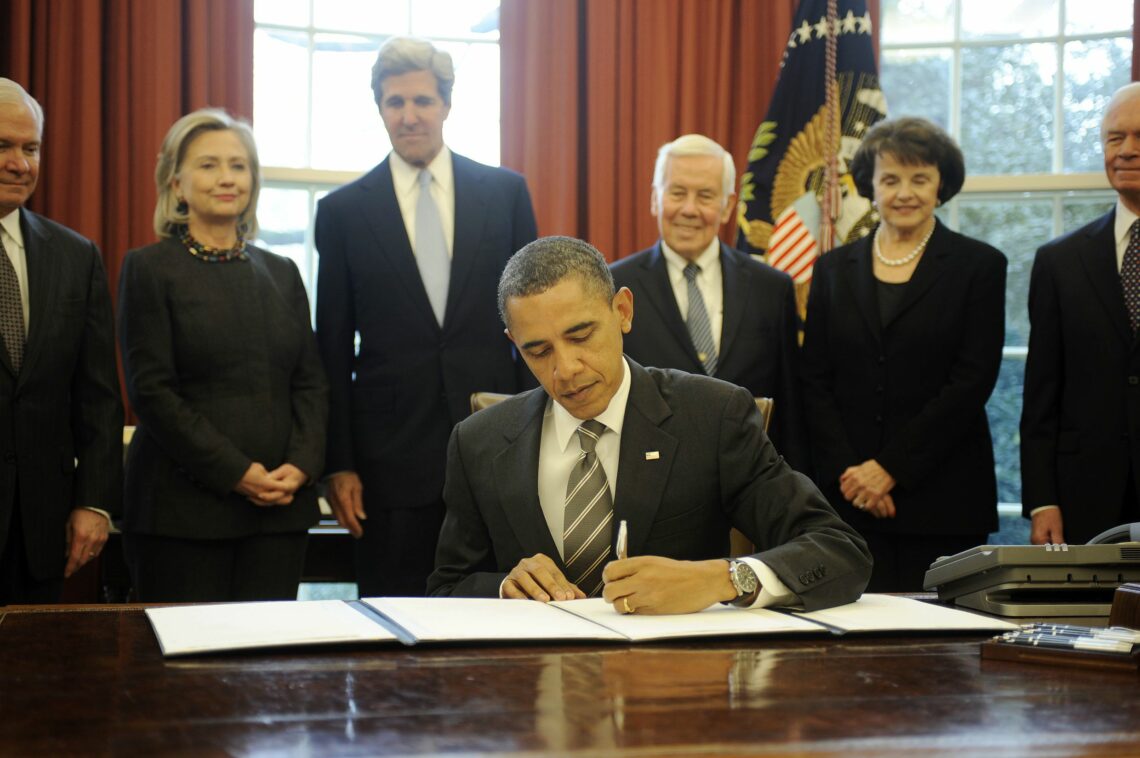The U.S. will stay active on the arms control front
Arms control treaties are unlikely to play an important role in the lead-up to the 2020 elections, but the current administration is dissatisfied with the New START Treaty and the Treaty on Open Skies. Washington may seek new agreements involving China instead.

In a nutshell
- The U.S. could rethink its participation in arms control treaties
- Washington will try to include China in future agreements
- The trend could revert if a Democrat wins the presidency
Negotiations over the management of strategic nuclear arsenals in the United States, Russia and China will occupy more of Washington’s time in the future, though talks may only happen after national elections in November. In particular, the fate of two arms control treaties will be on the table – the 2002 Treaty on Open Skies (an agreement among 34 nations, including Russia and the U.S. for pre-approved, unarmed aerial observation flights) and the 2011 New Strategic Arms Reduction Treaty (New START). In addition, the U.S. will be ramping up its efforts to include China in arms control negotiations.
Together, these efforts suggest a historic shift in attitude toward arms control. In the future, only stable global agreements that include the U.S., China and Russia will be sustainable. The results of the 2020 elections may well determine if Washington continues on that path or reverts to a more traditional bilateral approach.
Americans at the polls
Looming presidential elections, control of both houses of Congress and the response to the COVID-19 outbreak will continue to dominate the attention of policymakers, politicians and the media. While there is a tendency to view many issues through this perspective, in practice few questions will significantly influence the electorate’s choices. Arms control is certainly not one of those matters, as it hardly registers with American voters. A decision either way by the administration on the future of arms control treaties is unlikely to be a factor of importance.
In the near term there may be only a modicum of activity on this front. First, the Oval Office has far higher priorities on its agenda. In addition to focusing on the president’s upcoming reelection bid, the administration will also attempt to demonstrate a strong, proactive response to the COVID-19 pandemic in the weeks to come.
In the future, only stable global agreements that include the U.S., China and Russia will be sustainable.
Furthermore, the White House has yet to officially consult allies or Congress on the next steps it plans to take with Open Skies or New START. Nor has the Pentagon and the State Department announced what follow-up actions the country might take if it withdraws from either agreement. Before the U.S. pulled out of the Intermediate-Range Nuclear Forces Treaty in 2019, it entered into robust consultations with European allies and delayed withdrawal for several months at the recommendation of German Chancellor Angela Merkel. In all likelihood, a similar process would take place with the current treaties.
Finally, the U.S. corps of senior political appointees on arms control is thin at present. Key officials in the State Department, the National Security Council and the Pentagon have left over the past year, the most recent being Under Secretary of Policy John Rood at the Department of Defense. President Trump recently named Marshall Billingslea, an assistant secretary in the Treasury Department and former defense official, as his special envoy for nuclear negotiations. This appointment was long expected. Mr. Billingslea will no doubt spearhead the efforts of the administration, but his strategy is not yet fully underway.
Keeping the skies open?
There are reports that President Trump has already decided to withdraw from the Open Skies Treaty, a course of action favored by former National Security Advisor John Bolton. It is unclear whether this is a firm decision, or whether the president truly has strong feelings one way or the other. While the speculation could be true, there has been scant public activity from the administration on this front. Meanwhile, there are voices in Congress actively advocating U.S. participation in the treaty. Recently, two powerful Democratic senators, Senate Foreign Relations Committee ranking member Bob Menendez and Senate Armed Services Committee ranking member Jack Reed informed U.S. Secretary of State Mike Pompeo of their concerns over withdrawal. In addition, many NATO allies and partners value the agreement, arguing it is particularly important at present while relations with Russia are so problematic.
The 2020 National Defense Authorization Act conference report summary calls for congressional notification and a 120-day waiting period before announcing an intent to withdraw from Open Skies.
The White House has been signaling its interest in broadening arms control agreements to include Beijing.
In two public forums, Defense Secretary Mark Esper pressed Europeans to back the U.S. in demanding changes to Open Skies, including modifying restrictions to overflights of Kaliningrad. In addition, Mr. Esper recently stated in congressional testimony that the Defense Department will not replace the aging Boeing OC-135B aircraft used for its Open Skies reconnaissance flights until U.S. participation in the treaty is resolved. These comments suggest that Washington might pursue a “fix it or nix it” strategy, much like it did before withdrawing from the Iran nuclear deal. All these factors suggest a slower approach from the White House at present.
Fresh start
The New START treaty between the U.S. and Russia expires on February 5, 2021. The agreement restricts the delivery systems and warheads Moscow and Washington can deploy, and also provides for a monitoring and verification regime.

There is no bipartisan consensus on New START. Arms control advocates want the U.S. to seek an extension of the treaty for another five years. Critics of New START argue the agreement is deeply flawed and that it allows Russia to build up and modernize its arsenal. “Extending a flawed treaty would only create a false sense of security,” concluded Patty-Jane Geller, a nuclear deterrence and missile defense expert at The Heritage Foundation, a U.S. think tank. Opponents of the treaty would prefer the administration continue engaging with the Russians in nuclear discussions, but let the current treaty expire and focus on modernizing the U.S. nuclear arsenal. “Russia will ultimately gain incentive to negotiate an improved arms control agreement once the U.S. begins to field new systems,” argued Ms. Geller. Indeed, the Trump administration has dramatically increased funding for nuclear weapons modernization.
While proponents of the treaty argue keeping New START in place is essential to forestall a new arms race and retain a verification regime, critics counter Russia is already modernizing its arsenal and the current verification system is inadequate.
The administration has yet to make a clear move regarding the future of New START.
Future of arms control
Rather than show its hand on either treaty, the White House has been signaling its interest in broadening arms control agreements to include Beijing. President Trump believes that any treaties that do not include China will not realistically manage nuclear competition among global nuclear powers.
Mr. Trump has shown interest in holding a summit of the UN Security Council’s five permanent members to discuss arms control in the hopes of making progress on a deal that would include both Russia and China. There has, so far, been little response to the idea. Russia does not appear opposed to the idea, but only if the U.S. does all the heavy lifting to get China to the table. Traditionally, China has been averse to participating in nuclear arms talks. Nothing indicates it will change its position in the near term. Nevertheless, there is no question that the U.S. remains committed to expanding arms control talks to include China as a long-term goal.
The U.S. strategy also appears to include measures to compel China to negotiate, including field capabilities. Ground-launched cruise missiles deployed to the Pacific could induce China to see an advantage in forestalling an arms race with the U.S.
Scenarios
In the near term, the most likely scenario is that the U.S. will pursue a one-year extension of New START, which will put the future of the arms control regime into the hands of the next administration. If President Trump is reelected, more likely than not the U.S. will not extend New START and end the agreement if the Russians do not agree to substantive changes. The fate of Open Skies is less clear. The administration will likely first evaluate whether its “fix it or nix it” campaign is having any impact on European allies.
In contrast, if a Democratic candidate wins the presidency this November, it is almost certain that they will seek a full extension of New START. Further, they will likely use the extension as a springboard for yet another attempt at “resetting” relations with Russia. A Democratic administration would assuredly not withdraw from Open Skies.
There is little likelihood of serious U.S.-Russia-China arms control talks in the near term regardless of the 2020 election results. Also, no matter who wins in November, a flurry of consultations, decisions and activities is likely to follow. The outcome of the election, however, could significantly affect the direction of U.S. arms control efforts.







